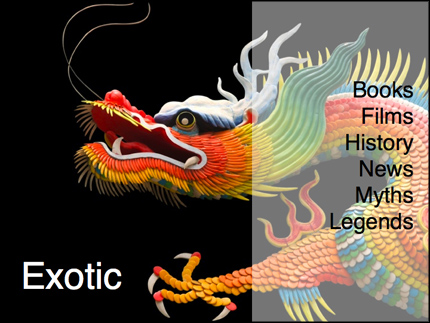Back to the Story section Page

Photo by Gisela Giardino
Once you’ve got the Structure of your presentation clear, it’s time to dream up a story that will bring the material to life and make it meaningful for your audience.
(You can also do it the other way round — i.e. think up a story then draw out the key points. This can be great on a story pops into your mind that’s just right for your subject and audience. The only danger is that you could get caught up in an exciting story that isn’t 100% relevant. If you start with your three key points and call to action, then you’ve anchored your presentation in the real-world problem faced by the audience.)
To dream up a story, look at your material and ask yourself “Who does this remind me of?”. Ask “Who?” instead of “What?” — you want a human story based around a character.
There are two basic kinds of story:

Everyday stories are reasonably close to the audience’s experience. They are stories about people like them, facing problems very similar to their own. E.g. my story about giving a presentation at the TV company and having to fit it into half the scheduled time.
Use everyday stories when you want to make the link between your story and the audience’s experience clear and explicit. It also helps to bring you closer to the audience, by showing you can relate to their experience. This effect is particularly powerful if you tell a story about your own experience.
A pitfall of everyday stories is that they can be too close to the problem in hand, and are associated with assumptions and ideas about the problem that are keeping the audience stuck.

Think of an everyday story
Look at your material and ask yourself whether it reminds you of a challenge faced by:
- you
- your family
- your friends
- friends of friends
- your colleagues
- your customers

Exotic stories are stories taken from the worlds of fiction (myths and legends, novels, films, plays), history or public events (newspapers, TV news). E.g. my example of the cave paintings, and the caveman’s presentation.
Use exotic stories when you want to encourage your audience to break out of their normal frame of reference and look at the topic from an unusual perspective. Exotic stories are particularly good at entrancing and inspiring an audience. They usually involve dramatic stories and powerful emotions, which can make for a compelling presentation, especially if you ham it up a bit!
A pitfall of exotic stories is that they can be too far away from the audience experience for them to relate to, so that they don’t make the connection with the problem they are facing.

Dream up an exotic story
Look at your material and ask yourself whether it reminds you of a story you have encountered in the following areas:
- films
- novels
- myths and Legends
- history
- newspapers
- TV news
Honing Your Storytelling Skills
Once you’ve got your story, it’s important to make it your own, by adapting it to your purposes and personality. Maybe you have a gift for humour, melodrama, mimicry or some other aspect of storytelling — notice what works best for you, and schedule stories accordingly.
Personally, I tend to recite my stories aloud, to an empty room, several times before I’m happy that I got the gist of it. If I’m lucky, I can persuade my wife or a friend to listen to the story and give me feedback.

Practise Storytelling
Take every opportunity to practise your storytelling skills. Here are some options::
- Write the story down and revise it until you’re happy with it. (DON’T read from the paper when you present! Just use the writing as a preparation exercise.)
- Recite the story to an empty room until you’re happy with it.
- Recite it to a friend and get some feedback.
- Each time you tell the story to an audience, notice what works best and amplify it (while editing out any bits that don’t work so well).